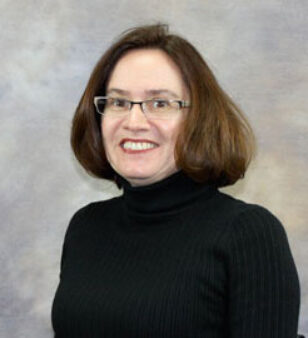
Education
Ph.D. in Bioorganic Chemistry, State University of New York at Binghamton
B.S. in Biochemistry, University of Scranton
Courses Taught
Biochemistry I and II
Biochemistry Laboratory I and II
Toxicology
Survey of Organic Chemistry
Heterocyclic Chemistry
Career Highlights
Marianne Staretz, Ph.D., did her doctoral research on the mechanism of the colchicine-tubulin interaction in relation to cancer. A multi-disciplinary approach combining the techniques of organic synthesis, medicinal chemistry and biochemistry was used. She went on to do postdoctoral research at the American Health Foundation, a non-profit research institution dedicated to disease prevention. Her research focused on the effects of isothiocyanates, dietary inhibitors of carcinogenesis, on the metabolism of and formation of DNA adducts by carcinogenic tobacco-specific nitrosamines and benzo(a)pyrene. Staretz has continued some of the cancer prevention research at Cedar Crest College by examining the cancer prevention mechanism of organoselenium agents. She has also expanded some of the toxicology experience gained at the American Health Foundation into the area of forensic toxicology and has several ongoing research projects in this area.
Memberships and Awards
Member-American Chemical Society (ACS), Northeastern Association of Forensic Scientists (NEAFS), and American Academy of Forensic Science (AAFS)
Professional Advice
“I don’t think students realize as they are progressing through their years of college how valuable the experience actually is. The goal is not just to get that degree. You will actually use what you are learning here—so work hard to learn as much as you can. The greater the effort you put into it, the greater the rewards will be.”
Why Cedar Crest?
“I have always wanted to teach at a small liberal arts college where teaching is the focus of the college. Cedar Crest College certainly fits in that category. On my first visit to Cedar Crest, I became aware of a faculty dedicated to teaching and knew that I wanted to be a part of that faculty. I am surrounded by some very talented teachers and scholars and it is a privilege to be a part of that community. Being part of the family of women scientists, it is also a pleasure to be involved in the education of future women scientists and contribute to the growth of this family.”